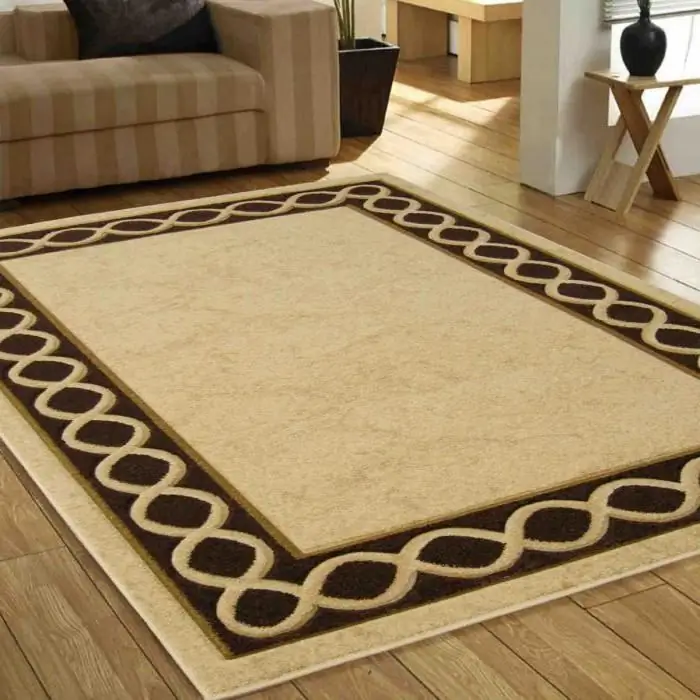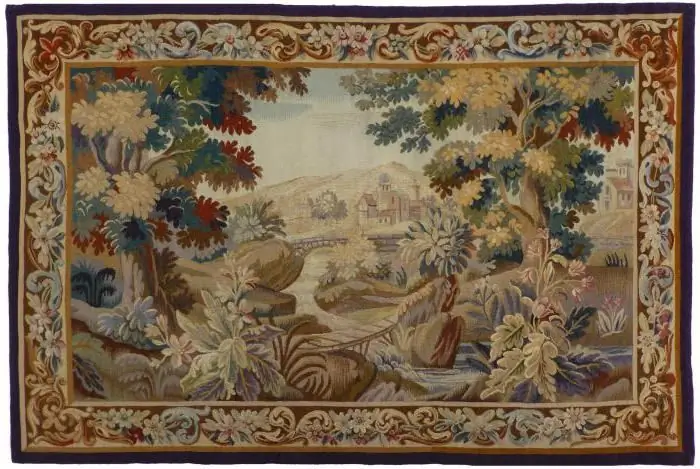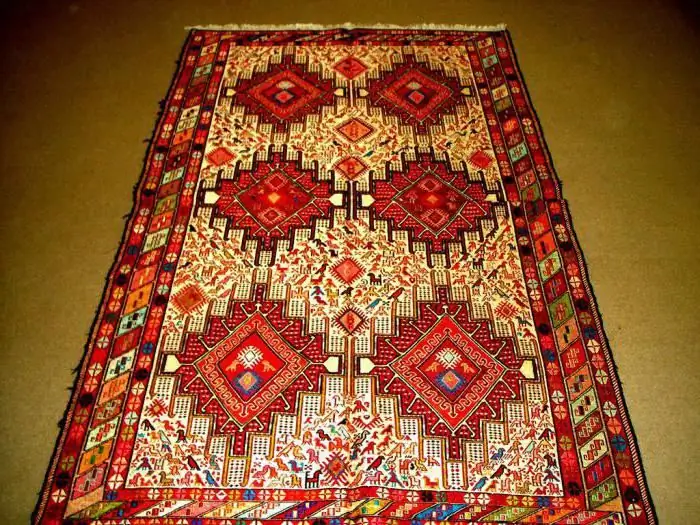Cosiness and comfort in the house depend on many things, including a warm and beautiful carpet on the floor. But, as you know, in addition to advantages, it also has disadvantages. For example, it is an excellent dust collector, but cleaning it out is not so easy. But these problems can be avoided if you choose a lint-free carpet.

Features of lint-free carpets
The fabric of such a carpet is formed by a simple interlacing of warp and weft threads, so its surface is smooth, lint-free, and the pattern can be not only on the front, but also on the inside.
Thanks to a special counting technique, masters create not only various patterns on the canvas, but even real paintings, such as, for example, in cross-stitching. Such picture carpets, such as tapestries or tapestries, are more often used not as a floor covering, but for wall decoration. By the way, along with a decorative lint-free carpet, in this case it also functions as an additional insulation.
It is believed that such carpets come from an ordinary mat, but now, of course, others are used, including synthetic materials. For example, machine-made lint-free carpets are often woven from acrylic fibers or even rayon. But the best and traditional material is natural wool.
From time immemorial
The art of carpet weaving was born many thousands of years ago. This is evidenced by both written sources and archaeological finds. So, in Altai, in the mound Pazyryk, a carpet was found that is 2500 years old. Thanks to the permafrost, it has been perfectly preserved, you can admire the bright color, intricate pattern, and images of griffins, fallow deer and horsemen.
The most ancient are woolen lint-free carpets that were woven in ancient Egypt and Persia. And in later times, the products of Arab masters were considered the best. These carpets were very expensive and were not only a luxury item, but also a kind of symbol of greatness. They were laid in front of the thrones of rulers, and apparently, since those ancient times, it has become a custom to spread carpets in front of honored guests on solemn occasions.

In Europe, carpet weaving appeared in the Middle Ages. Moreover, almost exclusively lint-free carpets were made - tapestries and tapestries, which decorated the walls. The best European products of this kind were Brussels tapestries.
Today, a lint-free carpet is no longer a luxury item, although handicrafts are still highly valued.
Keeping hands warm
With the spread of machine production, handmade lint-free carpet has not lost its relevance. At all times, the work of the master was respected and valued above the machine.
Currently centershand-woven carpets are concentrated in the countries of the Middle East, India, as well as in Dagestan and Azerbaijan. Not even centuries-old, but millennia-old traditions are preserved there, and craftswomen (women are mainly engaged in carpet weaving) use techniques and techniques that have not changed since ancient times. Even the looms that make magnificently beautiful carpets are as simple as possible and seem to come from the era of pyramids and warlike nomads.

And the designs of these carpets are also traditional. The main elements of the ornament, patterns and composition have not changed for centuries and have been preserved by more than one generation of craftsmen. According to the drawing, connoisseurs can easily distinguish Azerbaijani jejim from Turkish kilim or Dagestan sumakh.
Types of lint-free carpets
There are many varieties of such carpets, but the most famous and common are kilims and sumakhs.
Kilim is a hand-knotted woolen lint-free carpet with a smooth surface. Its peculiarity is that it does not have a wrong side, and the bright pattern of the picture is equally good both from the front and from the wrong side. The word "kilim" is of Turkish, or rather even Persian, origin and means floor covering.

Sumakhs have a fluffy wrong side, which is formed by the ends of woolen threads left during work. A lint-free carpet made using this technique is softer and much warmer than kilim, and such carpets are woven in Dagestan.
But the varietiesAzerbaijani carpets - dzhedzhimy, shedde and zili differ not so much in technique as in ornament. The most striking and decorative are zili.
Interest and respect for handicrafts support the existence and development of the ancient art of carpet weaving. And masters who preserve the traditions of their ancestors give us the opportunity to enjoy the beauty and convenience of their works of art.






